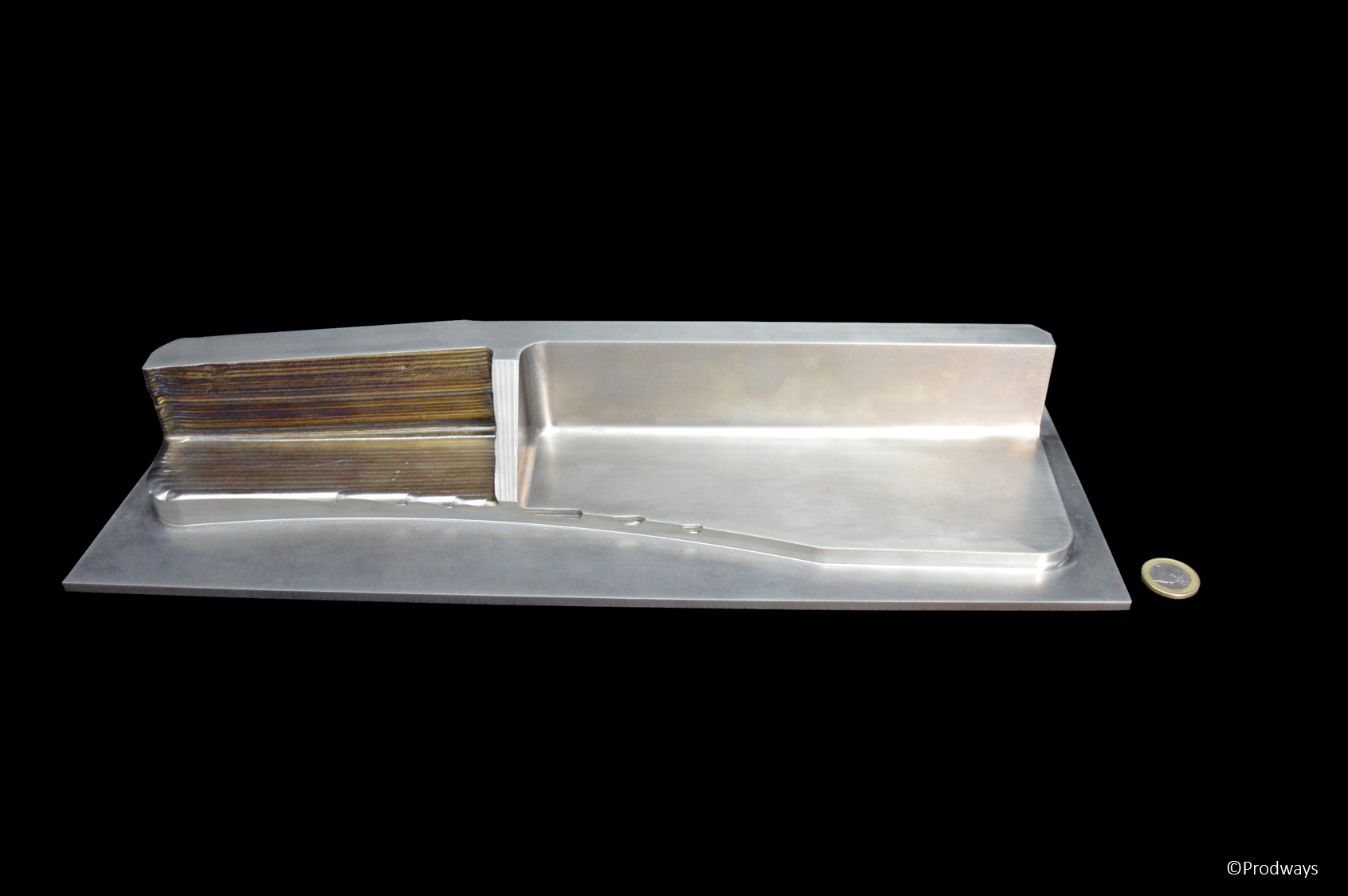Nexteam Group and Prodways Group have announced plans for the installation of a Rapid Additive Forging (RAF) machine at Nexteam’s facility in Toulouse, France. When Nexteam receives the printer in April, they will be the first contractor to obtain an RAF printer.

Mass produced 3D printed titanium parts by mid-2019
Nexteam, based Marmande, France, specialises in precision mechanics and hard metal machining for the aerospace, space and defense markets. Prodways, the 3D printing division of Groupe Gorge, similarly specialises in the manufacture of parts for the aerospace industry using 3D printing.
Prodways is known for their 3D printers, including the industrial DLP® MovingLIGHT® technology, a range of laser sintering 3D printers, and ceramic DLP printers.
In 2016 Nexteam and Prodways reached a partnership agreement that saw them collaborate on the development of mass produced metal 3D printed parts for the aerospace industry.
Nexteam hopes to start mass production of 3D printed titanium parts by mid-2019, after a qualification phase in which the printer will be tested for repeatability. Frédéric Gentilin VP of Nexteam Group said in “under 18 months we will be able to provide our customers with titanium parts with higher mechanical strength than other 3D printing techniques, for new generation aircraft.”

Mass produced 3D printed aeronautical titanium
The RAF process is the result of several years of development by Prodways in collaboration with fellow Groupe Gorge subsidiary Commercy Robotique, a company specialising in robotic welding.
Groupe Gorge’s Elodie Robbe-Mouillot said the RAF process is “in the High Deposition Rate category”, where “the 3D printer uses a Robot Equipped with a head depositing molten metal layer-by-layer in an atmosphere of inert gas. The metal is [made] molten by an electrical arc.” The printer purchased by Nexteam features a 1200 x 800 x 500mm printing bracket.
Metallurgic analyses over the past year have reliably shown the homogeneity and absence of porosity in metals 3D printed by RAF 3D printers. Prodways says the key benefits of the RAF technology are: an over 80 percent reduction in waste relative to conventional machining, the elimination of tooling and a reduction in manufacturing lead times.
Gentilin said “this project is strategic, a real competitive edge for the Group. We are the first in France to get equipped with this technology. In real terms, we will be cutting our production cycles and extending our product range.”
Last year Prodways raised €50.7 million through an initial public offering (IPO). In 2017 they had a revenue of €34.8 million, with nearly 40 percent from outside France.
In more recent 3D printing investment news, Desktop Metal received $65 million in a round of financing led by Ford.
The metal 3D printing market is also set to expand with Stratasys releasing a new metal 3D printer in April.
The 2018 3D Printing Industry Awards take place on May 17th in London, make your vote now.
Keep up to date with the latest 3D printing news, subscribe to the 3D Printing Industry newsletter, follow us on Twitter, and like us on Facebook.
Looking for a 3D printing job? Post a job or discover your next career move now.
Protolabs is sponsoring the 2018 3D Printing Industry Awards design competition. Submit your entries now for the chance to win a 3D printer.
Featured image shows the Prodways RAF 3D printing system. Image via Prodways.


